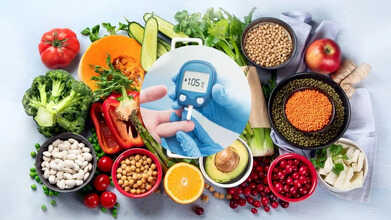- Health Conditions A-Z
- Health & Wellness
- Nutrition
- Fitness
- Health News
- Ayurveda
- Videos
- Medicine A-Z
- Parenting
How Much Water Should You Drink?

We all know that drinking water is good for us. If you are feeling tired, have some water. Have a dry skin? Have some water. Have a dry throat? Have some water. It is almost like water is the fix to all our issues. May be it is, but not always. So, are we sometimes drinking more water than necessary? What happens then?
Many say that there is an 8x8 rule one must follow when it comes to drinking water.
What is the 8x8 drinking water rule?
Many believe that in the 8x8 rule, eight 240ml glasses of water per day adds up to almost 2 liters. However, it is not in the guidelines in both the UK and the EU health advisory. None of them recommends this specific amount.
So, where did it origin from?
The origins of this rule seem to come from misinterpreted advice given decades ago. In 1945, a US advisory board suggested adults should consume one milliliter of fluid per calorie of food, totaling about two liters for women and 2.5 liters for men. Importantly, this included all drinks and even water-rich foods like fruits and vegetables.
A later book in 1974 recommended six to eight glasses of water daily but also noted that coffee, tea, and even beer could count towards hydration. Yet, the idea of drinking two liters of plain water daily took hold and has persisted ever since.
How Much Water Do We Really Need?
As per experts, drinking 8 glasses of water a day may be unnecessary and the research estimates that the actual requirement is around 1.5 to 1.8 liters per day. This not only includes water, but all kinds of fluids from all sources that we may consume in a day.
Also, studies show that instead of following a rigid routine, what is best is to focus on factors like temperature, physical activity and health conditions for your water intake. Those in hot and humid climate, high altitudes or pregnant or breastfeeding, and athletes may require more water. Whereas those in cooler areas, with a more sedentary lifestyle won't. However, for the average person, thirst is a more reliable guide than any fixed rule.
ALSO READ: What Happens When You Drink Too Much Water?
Science of Hydration and Dangers Of Over hydration:
Water is necessary to transport nutrients, control temperature, and keep organs functioning. We lose water through sweat, urine, and respiration, so staying hydrated is critical. However, dehydration develops only when the body loses 1-2% of its total water content.
A widespread myth is that feeling thirsty indicates that you are already severely dehydrated. Experts argue that thirst is an excellent evolutionary mechanism that ensures us drink when we need to. The body also produces hormones that aid in water conservation when necessary.
Drinking More Water Than Needed:
While drinking too much water is generally harmless, it can cause hyponatremia, a condition in which salt levels in the blood become dangerously low. This can result in brain enlargement, disorientation, convulsions, and, in extreme cases, death.
There have been reports of athletes overhydrating during endurance races, resulting in significant difficulties. Experts caution that simply following hydration myths might be dangerous, stating that thirst remains the greatest signal of when to drink.
Managing High Blood Pressure? Avoid Pairing These Two Foods

Credits: Canva
There are certain foods that complement each other nutritionally. For instance, pairing turmeric with black pepper helps the body absorb this powerful anti-inflammatory spice more effectively. Similarly, collagen found in animal products and seafood is absorbed better when eaten alongside vitamin C-rich foods like bell peppers or citrus fruits.
However, the opposite is also true: some food combinations can be outright harmful. One such pairing can be especially risky if you have high blood pressure.
According to the Centers for Disease Control and Prevention, high blood pressure was a primary or contributing factor in over 664,000 deaths in the U.S. in 2023. What’s even more concerning is that about half of American adults have high blood pressure.
So, which common food pairing should be avoided if you have high blood pressure? Keep reading to find out, along with expert-backed tips on healthier alternatives when cravings strike.
Common Food Pairing That’s Bad for Your Heart
If high blood pressure is a concern, it may be time to rethink a regular breakfast of bacon and cheese. Cardiologists told PARADE that this combination can be harmful to heart health when consumed often. “Bacon and cheese are comfort foods for many, yet regular consumption can work against heart health, especially for those with high blood pressure,” explains Dr. Martin Scott Dawson, MD, FACC, a cardiologist with Cooper and Inspira Cardiac Care.
Experts emphasize that bacon, in particular, is a food to limit to protect cardiovascular health. It’s high in both sodium and saturated fat. “Too much sodium draws water into the bloodstream, increasing blood volume and forcing the heart to work harder. Over time, this can make blood pressure harder to manage and damage blood vessels. Saturated fat in bacon also raises LDL cholesterol, adding to heart risk,” Dr. Dawson adds.
Dr. Karishma Patwa, MD, a cardiologist at Manhattan Cardiology and contributor to LabFinder, echoes these concerns. Cheese, while containing beneficial nutrients like calcium, is also high in saturated fat and sodium. When paired with bacon, the negative effects are amplified. Dr. Dawson notes that cheese in moderation can fit into a balanced diet, but together with bacon, it creates a particularly high-sodium, high-fat meal.
Blood Pressure And Diet
According to Medline Plus, managing high blood pressure involves a diet rich in fruits, vegetables, and whole grains, while cutting back on high-sodium, processed, and sugary foods. Key strategies include lowering salt intake, adding potassium-rich foods like bananas and leafy greens, and opting for lean proteins instead of fatty meats. Staying hydrated and moderating alcohol and caffeine are also recommended.
Alternatives For Bacon and Cheese
For those who love bacon and cheese, it may be unwelcome news that eating this combo regularly can raise blood pressure. If a bacon, egg, and cheese sandwich is a favorite breakfast, are there healthier ways to enjoy it?
Dr. Patwa suggests using egg whites, low-fat cheese, and turkey bacon as a heart-friendly alternative. “These choices reduce saturated fat and sodium without sacrificing flavor,” she says.
Another savory option is a breakfast sandwich made with scrambled or poached eggs, avocado, spinach or arugula, tomato, and whole-grain bread, which Dr. Dawson recommends. “This provides healthy fats, protein, fiber, and potassium. It supports blood pressure, helps lower LDL cholesterol, and still offers a filling, satisfying meal,” he explains.
For a more plant-based approach, Dr. Dawson suggests scrambling tofu with turmeric and black pepper.
Dr. Dawson emphasizes that consistency matters most when managing high blood pressure. “Meals should be enjoyable, not restrictive. Long-term success comes from regular habits rather than perfection. Choosing foods that reduce sodium, increase fiber, and favor healthy fats strengthens heart health over time. Occasional bacon or cheese is fine if portioned thoughtfully. The key is building daily routines around heart-friendly choices while still enjoying the foods you love,” he says.
With this in mind, reserve bacon and cheese for special occasions and opt for plant-forward breakfasts most days. This not only supports heart health but also makes indulgent meals feel more special.
Fact Check: Does Aluminum In Vaccines Cause Food Allergies As RFK Jr Claims?

Credits: AP, Canva
Health Secretary Robert F Kennedy Jr. at a conference on Monday claimed that aluminum in vaccines cause food allergies. This is not the first time one is hearing about this, as his campaign against the aluminum has been an old one. In fact, in September, President Donald Trump said he wanted aluminum removed from vaccines.
As a result, a month later, the Centers for Disease Control and Prevention (CDC), appointed an advisory committee that said in a document that the CDC could study whether either of two aluminum adjuvants in childhood vaccines could increase the risk of asthma. On fact, a draft agenda for its December meeting also includes a discussion of "adjuvants and contaminants".
On Monday, RFK Jr. said that while there is no science backing the connection, he would want researchers to look at it because as per him, their use "fit the timeline perfectly". "We don't have the science to say this is an effect or not, or maybe other things like, for example, pesticides that fit the same timeline," he said at the conference that was focused on food allergies.
What Does The Science Say On Aluminum's Link With Food Allergies?
As per CDC, an adjuvant is an ingredient used in some vaccines that help create a stronger immune response in people receiving the vaccine. This means, the aluminum helps the vaccine work better. CDC notes that adjuvants help the body to produce an immune response strong enough to protect the person from the disease he or she is being vaccinated against. The CDC also states that adjuvants have been used safely in vaccines for decades.
The vaccines that contain aluminum adjuvants are manufactured by GSK Plc, Merck & Co., Pfizer Inc., and Sanofi Sa. These vaccines are used to protect children as well as adults against diseases like polio, hepatitis A and B, human papillomavirus, diphtheria, tetanus, pertussis, meningitis, and pneumonia.
However, as per a 2022 observational study titled Association Between Aluminum Exposure From Vaccines Before Age 24 Months and Persistent Asthma at Age 24 to 59 Months, there were possible relationship between the two, though the study did mention that "further investigation is needed". Though, this study has been contradicted by another 2023 study conducted by Denmark's public health agency found no such relation between aluminum and asthma.
RFK Jr. however, demanded that the Annals of Internal Medicine medical journal must retract the Danish study that found no such relation between aluminum and asthma, though the editors of the journal refused.
In fact, the American Academy of Pediatrics also noted that there is no credible link between aluminum in vaccines and the development of food allergies. In a Facebook post, the American Academy of Pediatrics noted: "There is no credible link between aluminum in vaccines and the development of food allergies, including peanut allergies. Peanut allergy risks are influenced by several factors, including genetics or delayed introduction of peanuts during infancy. Pediatricians are always available to offer support, guidance and answer any questions parents may have about vaccines and allergies."
Want To Lower Your Risk Of Type 2 Diabetes? Try These 3 Diet Plans

Credits: Canva
A number of healthy diets have been linked to a lower risk of type 2 diabetes, no matter a person’s ethnic background. Researchers suggest that these eating habits, which emphasize fruits, vegetables, and whole grains, “can be promoted across all populations.” The analysis looked at 33 studies involving 826,000 people, focusing on three specific diets.
Diet Plans To Lower Risk Of Type 2 Diabetes
These three diets, as per the researchers from the University Of Cambridge told us three diets that can lower the risk of type 2 diabetes:
Mediterranean Diet: Focuses on plenty of olive oil, vegetables, fruits, nuts, and fish, following the traditional eating patterns of Mediterranean countries.
Alternative Healthy Eating Index (AHEI): Highlights a diet rich in fruits, vegetables, whole grains, and healthy proteins and fats, aiming to reduce the risk of chronic illnesses.
DASH Diet: Created to lower blood pressure, this diet emphasizes fruits, vegetables, whole grains, low-fat dairy, and lean proteins, while limiting intake of saturated fats, cholesterol, and salt.
What Is The Mediterranean Diet?
The Mediterranean diet is based on traditional foods from countries around the Mediterranean Sea. It prioritizes vegetables, fruits, whole grains, legumes, nuts, and olive oil as the main fat source, while limiting red meat, sweets, and processed foods. Moderate portions of fish, poultry, eggs, and low-fat dairy are included, with a focus on fresh, minimally processed ingredients.
What Is Alternative Healthy Eating Index (AHEI)?
The AHEI is a dietary scoring system created by Harvard researchers to encourage healthy aging and reduce chronic disease risk. It promotes a diet rich in vegetables, fruits, whole grains, nuts, legumes, and healthy fats, while discouraging red and processed meats, sugar-sweetened beverages, and high sodium intake. A higher AHEI score reflects better adherence to a healthy diet.
What Is The DASH Diet?
The Dietary Approaches to Stop Hypertension (DASH) diet is designed to lower blood pressure and improve heart health. It focuses on nutrient-rich foods like fruits, vegetables, whole grains, low-fat dairy, and lean proteins, while limiting saturated fat, cholesterol, sodium, red meat, sweets, and sugary drinks. Nutrients like potassium, calcium, and magnesium are emphasized to support cardiovascular and overall health.
Impact on Type 2 Diabetes Risk
The study found that people who followed these diets most closely had a significantly lower risk of developing type 2 diabetes than those with the lowest adherence. Specifically, the DASH diet lowered the risk by 23%, the Mediterranean diet by 17%, and the AHEI by 21%.
Type 2 diabetes occurs when insulin does not function effectively, causing high blood sugar. Lifestyle interventions, such as adopting these healthy diets and exercising, can help lower blood sugar levels and reduce dependence on medication.
Benefits Across Ethnic Groups
The advantages of these diets appeared consistent across African, Asian, European, and Hispanic populations. Researchers stated, “Major ethnic groups benefit equally from higher adherence to these dietary patterns,” though they noted more research is needed to tailor recommendations for specific populations.
The findings are scheduled to be presented at the European Association for the Study of Diabetes (EASD) conference in Vienna this September.
© 2024 Bennett, Coleman & Company Limited

